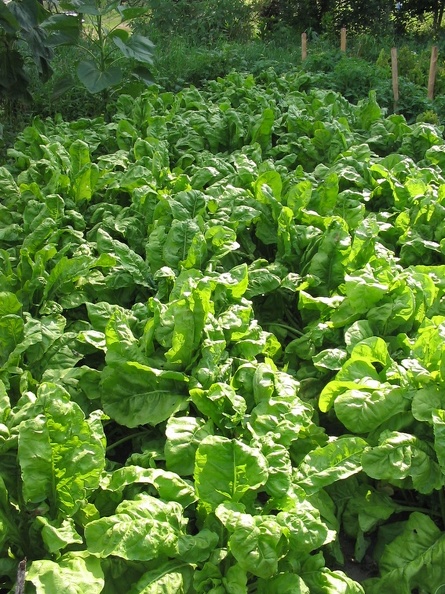Now is the Time to Sow Cool-Season Seeds!

Bob Wildfong
They All Grow Wild Someplace
Wild plants are obviously able to look after themselves, and sow their seeds without your help. A very useful trick is to learn where your garden plants come from originally, because that can tell you the kind of weather they can handle.
Most of our leafy greens, root vegetables, and some common herbs originally came from parts of the world with a similar climate to Canada. That means they're adapted to cool weather in spring, and frost at night. Although our domesticated varieties are sometimes less hardy than their wild relatives (just like poodles come from wolves) they don't mind at all being planted 3 or 4 weeks earlier than the last frost.
Seeds you can sow when the night-time temperatures are still around minus 5 (C):
Cabbage, carrots, dill, kale, kohlrabi, leeks, lettuce, onions, parsnips, peas, radishes, spinach, and swiss chard. Even if there's frost, they won't mind a bit.
Many of the seedlings that you usually start indoors are actually tropical plants. Tomatoes, eggplants, and many annual flowers are sensitive to frost and cold temperatures because they come from parts of the world where winter is very short, or it never freezes at all. That's why we have to be careful to protect them from frost, and to plant them out in the garden only after there is no danger of night-time frost.
Wait until night-time temperatures are consistently above zero (C):
Amaranth, basil, corn, cucumbers, eggplants, ground cherries, melons, okra, squash, tomatoes, watermelons, and tropical flowers have to be protected from frost.
It might seem simple enough to separate your crops into two groups: frost-resistant and frost-vulnerable, but there's another category of plants that really don't like cool weather and often grow better if you just wait a little longer before planting them out.
Beans come from the tropics of Central America, and they really like warm soil for germination. If the soil is cool (not freezing, just cool) they sprout slowly and sometimes even rot instead of germinating at all. For best results, wait until night-time temperatures are above 10 (C) for five days in a row before sowing bean seeds. You'll have to be patient for an extra week, but it's worth it.
Peppers are also tropical, and they really hate chills. Cool temperatures don't kill them, only frost does, but a chilly night below 10 (C) can make a pepper seedling shut down its growth for a whole week. They just stop growing. That means if you wait until night-time temperatures are above 10 (C) consistently before planting your peppers outside, they will grow faster than if you planted them earlier. It's hard to be patient, but it makes a difference if you are.
Spring is advancing quickly, but there's still lots of time for planting your tropicals later. Right now, it's time for cool-season seeds!
Not yet a member?
An annual membership to Seeds of Diversity gives you access to our seed exchange, seed grow-out programs, and our online news.

We depend on donations to do our work.

Thank you for your support!
